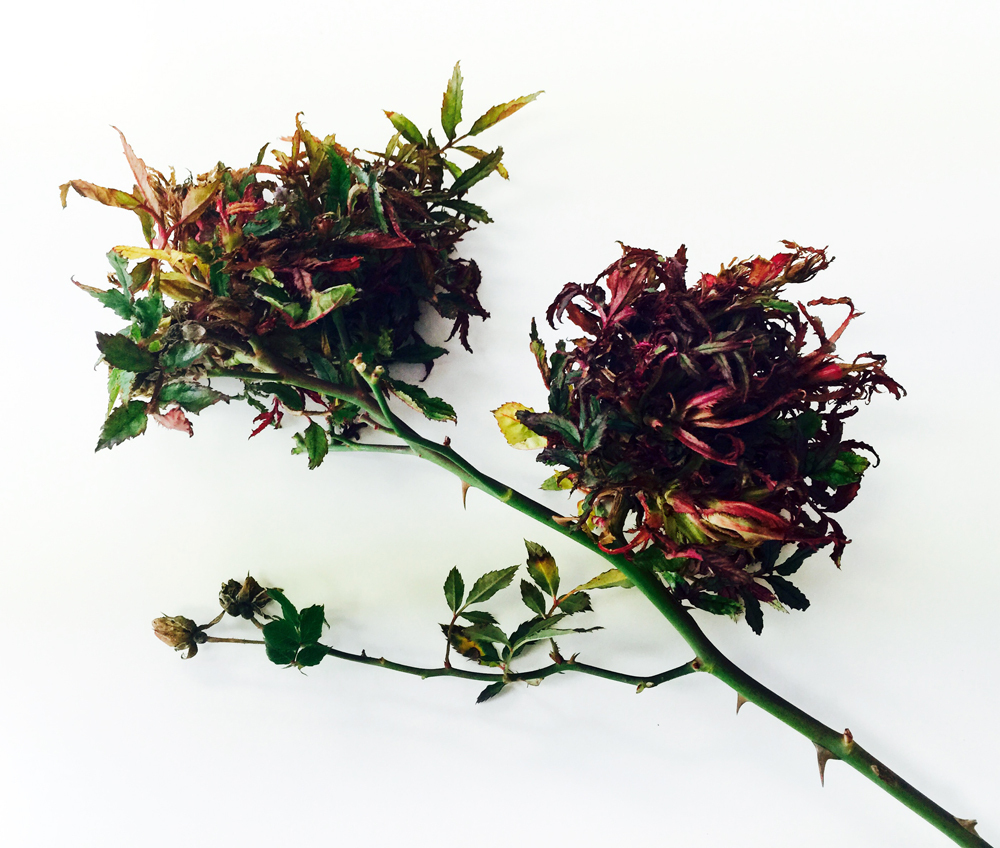Rose Rosette Disease
July 2, 2012
There's a pretty hefty outbreak of Rosette disease making it's way around North Texas right now. You may be well aware of this if you have an 'Knockout' roses in your garden as they've taken the hardest hit this spring. What is Rosette disease you ask? Well, it's thought to be a virus (but the organism itself has yet to be identified) spread by the eriophyid mite, Phyllocoptes fructiphilus, or by grafting.
If your rose plant/s are infected, the first symptom you'll usually see is rapid elongation of new shoots, followed by something called "witches' broom". The new stems are stunted and begin clustering into many small branches. The leaves will be distorted and tend to be very red in color.
The problem with this disease is that it is as of yet uncurable. The infection will typically kill a small or young plant within two years. A larger more established rose can survive as long as five years. But if you allow infected plants to stay in your garden, you'll only expose the rest of your (and your neighbor's) healthy plants to the disease. Sadly, the best option is to dig and remove the plant completely. Roots and all.

Rose Rosette Disease "witches broom"
PC: Leslie F. Halleck
Because the causal agent of the disease is not soil borne, you should be able to re-establish new healthy roses in the spot where you removed the diseased rose. But you must make sure you remove all the remaining root tissue from the soil. However, if there are other infected plants nearby, or wild multi-flora roses growing around your neighborhood, your new plants can be re-infected by the mites as they move from plant to plant.
When you garden organically, as I do, the focus is on building healthy soil to grow healthier more vigorous plants. And yes, vigorous plants with a strong immune system are better able to ward off any number of pest and disease issues. Because I have faith in nature I’m sure that there may be rare cases of roses being able to run the course of the disease and survive. I just don’t have any real documentation of that happening. While we might wish it did, gardening organically does not make your rose plants immune to this viral disease. While feeding and pruning your infected plants may make you feel better and hope that you can cure it with love, it's still not a cure. As I stated above, you can limp an infected plant along for a few years...but remember your infected plant is still acting as a host for the virus, which can easily spread to roses in the rest of your garden if the mites are present, not to mention the rest of your neighborhood.
Do us all a favor: The best horticultural practice when you have Rosette is to remove the plant and roots completely in order to stop the spread of the virus. Amend the soil with organic compost and apply a bio-stimulant (like Medina soil activator) and/or product that contains mycorrhizal fungi (Espoma Bio-Tone is a good one). Then, you can either try replanting with new healthy roses or a new species.

